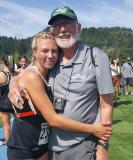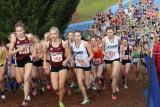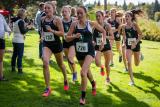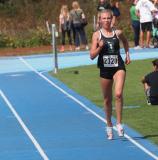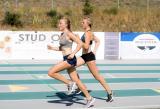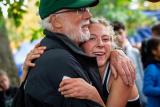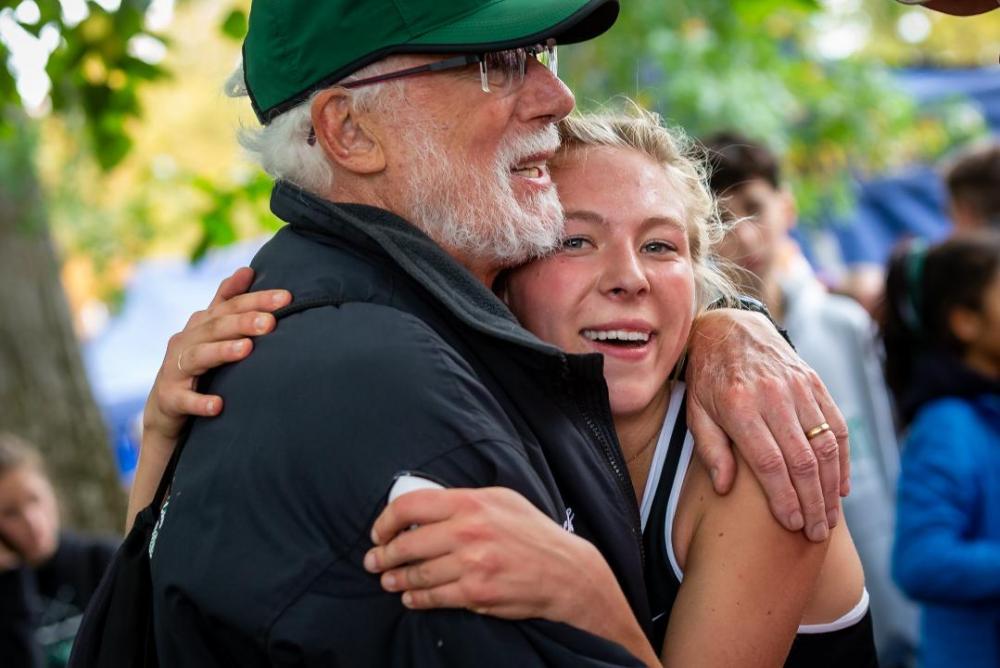Folders |
Summit's Fiona and Isabel Max - Athlete's Blog - 11/25/19Published by
My Coach - The Legend And Tall Tales of Jim McLatchie Previously - Nov. 13 blog | Oct. 31 blog | Oct. 18 blog | Oct. 9 blog | Oct. 4 blog | Sept. 27 blog By Fiona Max for DyeStat The track’s new stripes glint brilliantly in the late spring sun at Summit High. My teammate glides alongside me. It’s hot out — the type of hot that sticks to your skin. We’re running 400s with decreasing rest in preparation for the Jesuit Twilight Invite next week. My form starts to break down on the fourth interval. I can feel the group pulling away from me with each breath. I look up and my coach, Jim McLatchie,is standing at the 200-meter mark, stopwatch in hand. “When the going gets tough, the tough get going, gang!,” Jim calls out. I blink away sweat and fix my eyes on the back of my training partner. The track falls away. Corrugated steel groans and twists upward to form a different kind of track, that of a train. Jim’s feet hit the gravel rhythmically. It is pissing rain. The National Scottish Junior Cross Country championships are in two weeks. His pulse is his only measurement of pace. Down the tracks he goes. All his life, Jim has been taught to endure. Stubbornness proved to be a virtue. He spent the early years of his childhood in a one-room house in Glenbuck, Scotland. When he was 15, his family moved to the bleak coal mining town of Muirik. Jim and his siblings slept four to a bed. “Two at the top and two at the bottom,” as he says. Running water, electricity and a bathroom were luxuries for the rich. Muirik’s coal industry put Jim and the town’s boys “down the pipe” early. “I was 15 in July, and I had to report to the coal mine for a physical and started work the following week. I was assigned the wood yard… We were given a task list to take wood to the mine entrance. The wood came in different sizes — 10, 8, 6 and 4 feet. Our orders might say the following: 20x10, 30x8, 60x6 and 100x4. We loaded the wood on a “bogey,” which ran on the rail line. Loaded the bogey, pushed it about 200 yards to the mine shaft, unloaded, returned to the wood yard and worked until the order was complete. We worked in snow, rain and sun. Awful job. “No one could work down the mine or do shift work until they were 16 years old. The next step was to train you to work underground. At 16, I was sent to a coal mining school called Dungavel, about 10 miles from Muirkirk, where we were trained to work.” For most of Jim’s childhood, running was not so much a means to an end as it was a means to a beginning. It manifested as a 3-mile run to the candy score. Then it served him as a soccer phenom on the pitch. He became a paperboy and ran the route. One day, Jim decided he had enough of the mines. “I said, ‘I am out of here as I cannot work in this shit!’” He found a job working for the railroad. He began to look at running as a way out of this job as well. “We had hills surrounding the village, which was a great background for running. I ran in boots, which I wore in the pit and weighed about four pounds each. Full of studs with heel and toe plates. Did all my running with boots on except for faster stuff or races.” As Jim began to train for races, he began to win. His junior years (17-19) he won the National Scottish Junior Cross-Country Championship and was invited to compete against Europe’s best young talent in Brussels. Jim worked his way up the ranks at the railroad and began working in Glasglow, which had cinder tracks where he could learn the art of pacing. By 1959 Jim was Scotland’s fastest miler. In 1963, he announced he was moving to the U.S. to run at Lamar University in Texas. The BBC invited him to come on the air for a televised interview to discuss his decision to leave. Scotland would stay with him. He still hums “Marie’s Wedding” at our practices. Jim went on to place second at the U.S. Cross Country Championships and became the fastest college freshman in the country. By the end of his freshman year in the states, Jim had only gotten faster. At the Meet of Champions in Houston, Texas, Jim had the opportunity to race the great Jim Ryun, America’s teen idol and eventual world record holder and Olympic silver medalist in the 1,500 meters. Jim ran hard from the gun and beat Ryun in sweltering 90-degree heat. “About 100 yards from the finish, I could hear someone beginning to puke, and I thought, ‘They are going to throw up on me,’ which motivated me to keep in front. Crossing the finish line, I looked over, and it was Ryun puking his guts out.”
It's the week before my state meet in Eugene. My hands are on my knees and I am breathing hard. Jim walks over to me and pulls my chin up with his hand. “You’re strong as a horse,” he says, laconically. I look up at my coach. Some people have a look in their eyes. A look of fight; beautiful as it smolders; ferocious as it burns. Jim’s fight has never left his eyes. Not when he was born kicking (no doubt in imitation of a stride) into a world opaque with the dust of Scotland’s coal mines. Not while running down the train track until his legs gave out. Not while pulling away from Jim Ryun. After college, Jim returned home to Scotland to find he had outgrown the world of his boyhood. He moved to England in 1968. Jim never has a shortage of stories. He once had a casual run in with Queen Elizabeth and found out she liked watching horse races, just like him. He went to a Tina Turner concert and she dedicated her hit song, “Proud Mary,” to his wife at the time, Mary. But Jim was missing something. “I had experienced a whole different world and a lot of different cultures...I realized there was a big world out there and it was not in Scotland.” My coach came back to the U.S. He went on to coach four athletes to the Olympics and several more to the world championships. Eventually, he came to Summit with his wife and retired professional runner as well as Team USA coach, Carol. Carol and Jim are the quintessential power couple. They bring structure and pride to our program. Pure speed is not always their focus. They have taught us to compete with grace as well as grit; to keep our chins up. Jim is almost 80 years old now, but at heart, he is still just a boy who loves to run. “One winter (in Muirik), I was going for a run and told my brother, Colin, I was going to catch a hare (jack rabbit). He told me I was crazy. I said, “No way, as there is over one foot of snow, hares cannot run too fast in the snow, plus they will be easy to track.” So, he decided he would come with me, and sure enough I raised a hare (jack rabbit). The chase was on. All I had to do was keep it in sight. After about 20 minutes, the hare was exhausted and could run no more. As it lay there looking at me, Colin said, “What are you going to do now?” I replied: “Eat the bloody thing.” More news |


